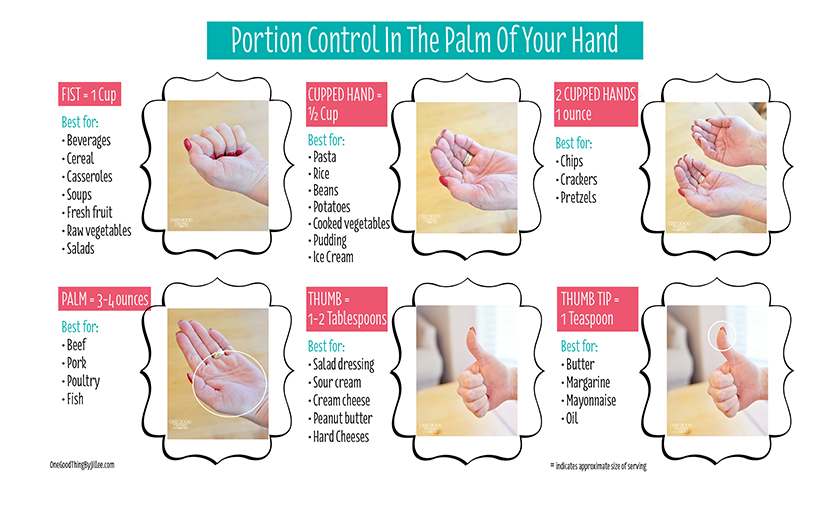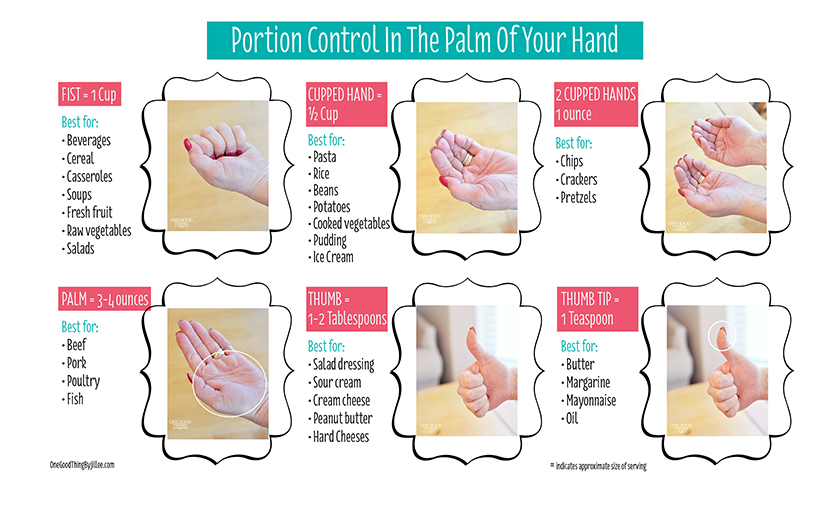Portion Distortion

By Yvonne Nienstadt, Nutrition Director
Do you suffer from portion distortion? If so, you are not alone. Food portions have changed radically in the United States in the last 60 years. If you’ve eaten at a restaurant lately, you’ve probably noticed that food portions have gotten much larger. Some portions are “super-sized,” and provide enough food for at least four people. Portions increased by a whopping 24.5% between 1970 and 2000, and our average daily calorie intake is up by a whopping 350 – 530 calories (USDA Factbook)! With increased portion sizes has come the inevitable expansion in waistlines and body weight. Most people do not increase their physical activity to compensate for the extra calorie intake. Visit the National Heart, Lung, and Blood Institute to view slide shows that reveal how much larger servings are now than in the past.
Why did food portions increase so dramatically?
There are several factors. Our agricultural system has been industrialized so that a mere 1% of our population grows more than twice the number of calories needed for every man, woman, and child in this nation. Some commodities such as soy, corn, and sugar beets are subsidized and as a result, there is a glut of these products that wind up in manufactured foods. Since the food industry has fixed costs such as rent, healthcare, taxes, rent, and utilities, for every penny more in sales, the ratio of profit to fixed costs increases. Double portions only cost a fraction more in fixed costs, which makes good economic sense to push volume. However, Americans are getting larger as a result.
You may not be able to ingest the huge platter of food at the restaurant, but you can take it home and enjoy it the next day – giving you an allegiance to the restaurant that was so generous. Additionally, food manufacturers know how to get us to eat more of their products so that it expands their bottom line and our bottoms! There are three major ingredients that make food seductive, irresistible, and addictive: sugar, fat, and salt – dubbed the “hedonic triangle.” Read Dr. David Kessler’s The End of Overeating or Michael Moss’ Salt, Sugar, Fat: How the Food Giants Hooked Us to learn more about what is termed ‘conditioned hyper-eating’ (you start and can’t stop).
What does it take to burn off all those extra calories?
Muscles use 75 – 90% of calories consumed. The more muscle a person has and the more active they are, the greater their metabolic fire and the more calories they burn. The problem is that Americans are sitting at least nine hours per day. Many people sit up to 15.5 hours per day – four hours of that is due to TV watching, according to the Nielson Ratings folks! When we sit for long stretches, our muscles relax and are not so receptive to insulin bringing in the energy producing fuels. Net result, we wear those calories as fat and, over time, are more likely to become insulin resistant (pre-diabetic) (Sources: US News, New York Times, and Mercola).
In my next blog post, I will reveal helpful tips on how to easily implement portion control into your everyday life and burn calories while working! See it here.



